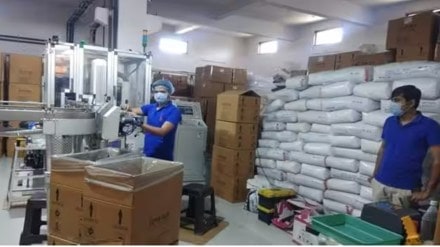The Gujarat chemical industry, largely comprising small and medium manufacturers, is going through a rough phase, with most manufacturers functioning at half their production capacity. A slump in demand in domestic and international markets is forcing them to reduce production and sell at lower prices, according to industry members.
Dr Jamin Vasa, chairman, Gujarat Chemical Association and Gujarat Pharmaceutical Association, said, “Most companies are working at around 40% of their production capacity. The lower production has caused manpower cuts and there have been approximately 15-20% job losses across the industry.”
He said inflationary tendencies in the US and European countries — the largest export destinations for chemical exports — have resulted in reduced demand. “That leaves the producers with two choices: either reduce production or sell at throwaway prices to compete with global and large domestic players,” Vasa said.
Expert reports have said the chemical industry may witness a y-o-y decline of 8% to 10%, and speciality chemicals may fall by around 20%.
Vasa concurred, adding, “Lower demand and higher production costs due to a hike in raw material prices, and lack of technological upgrades has made Indian players, especially MSMEs, uncompetitive in the global markets. Also, 60% of the raw material used in the industry is being imported from China and other countries. Global uncertainties have further increased the cost of raw materials.”
According to Naresh Patel, executive chairman & managing director, Ami Organics, an Ahmedabad-based chemical manufacturer, Indian industries are doing well in speciality chemicals, pharmaceuticals and agrochemicals, and bulk chemicals. “But we are lagging in manufacturing competitiveness and investments in research and development. Demand pick-up by Chinese manufacturers, inflationary pressures, and rising input costs are the primary reasons for a slowdown in the industry,” he said. Additionally, the green transition is reshaping the industry. “While this shift presents opportunities in renewable energy technologies, it may also lead to reduced demand for certain traditional chemicals,” Patel said.
On challenges facing the industry, Patel said adhering to evolving regulations and implementing eco-friendly practices requires considerable investment and operational adjustments. “Rising raw material prices and infrastructural challenges, such as limited domestic feedstock availability and delayed regulatory approvals are also causing roadblocks for the chemical industry,” he said.
He said investing in advanced technology, building strong research capabilities, establishing backward and forward linkages, and developing domestic capacity to reduce dependence on imports are key steps that could be taken to ensure strong and sustainable growth of the industry.
